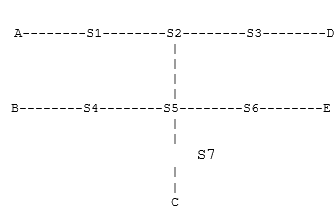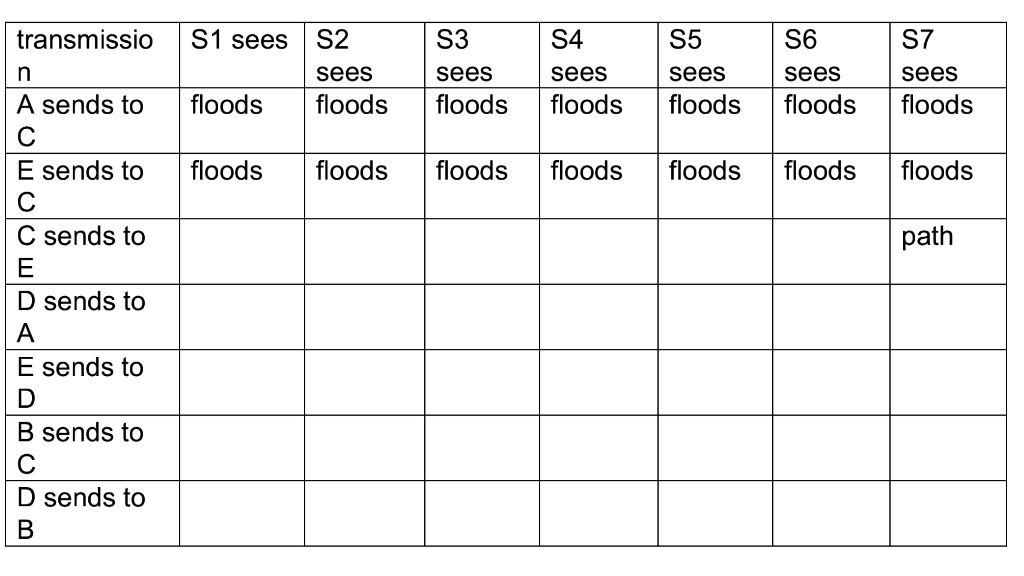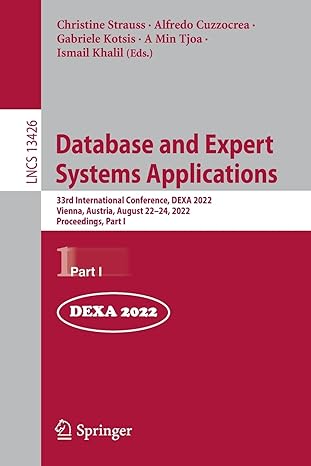Question
Consider the following arrangement of Ethernet switches (bridges) S1-S7 and hosts A-E. Each switch has a forwarding table of host,interface pairs; each table is initially
Consider the following arrangement of Ethernet switches (bridges) S1-S7 and hosts A-E. Each switch has a forwarding table of host,interface pairs; each table is initially empty. When a bridge sees a packet, it adds the sending host to the table, with the interface by which the packet arrived, if it was not there already.

Initially all the tables are empty, and then the following transmissions occur in sequence. After the indicated transmissions below, each switch does one of the following:
1) does not see the packet
2) sees the packet, knows where the destination is, and forward it along the path
3) sees the packet, does not know where the desetination is, and floods the packet
You are to indicate, after each transmission, which of the above done by each switch S1S7.
For example, in the first two rows, no table contains the destination C and so the packets are flooded to all switches; a consequence is that all switches now have A and E entered into their tables. I the "c sends to E" row, all swichtws know where E is, so only options 1 and 2 are possible; an answer for S7 (the first switch encountered by the packet) is shown. it may help to label S1-S7 above with senders ABCDE they have seen.

Step by Step Solution
There are 3 Steps involved in it
Step: 1

Get Instant Access to Expert-Tailored Solutions
See step-by-step solutions with expert insights and AI powered tools for academic success
Step: 2

Step: 3

Ace Your Homework with AI
Get the answers you need in no time with our AI-driven, step-by-step assistance
Get Started


